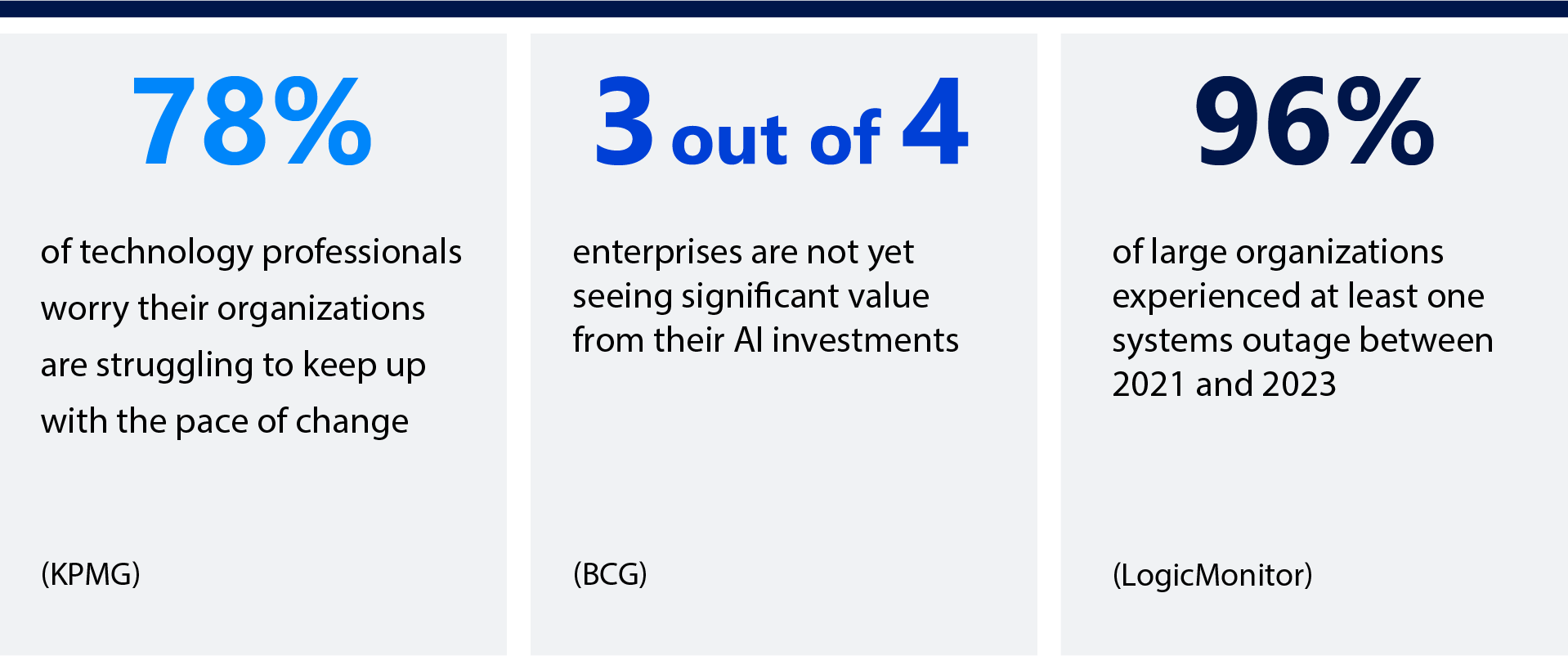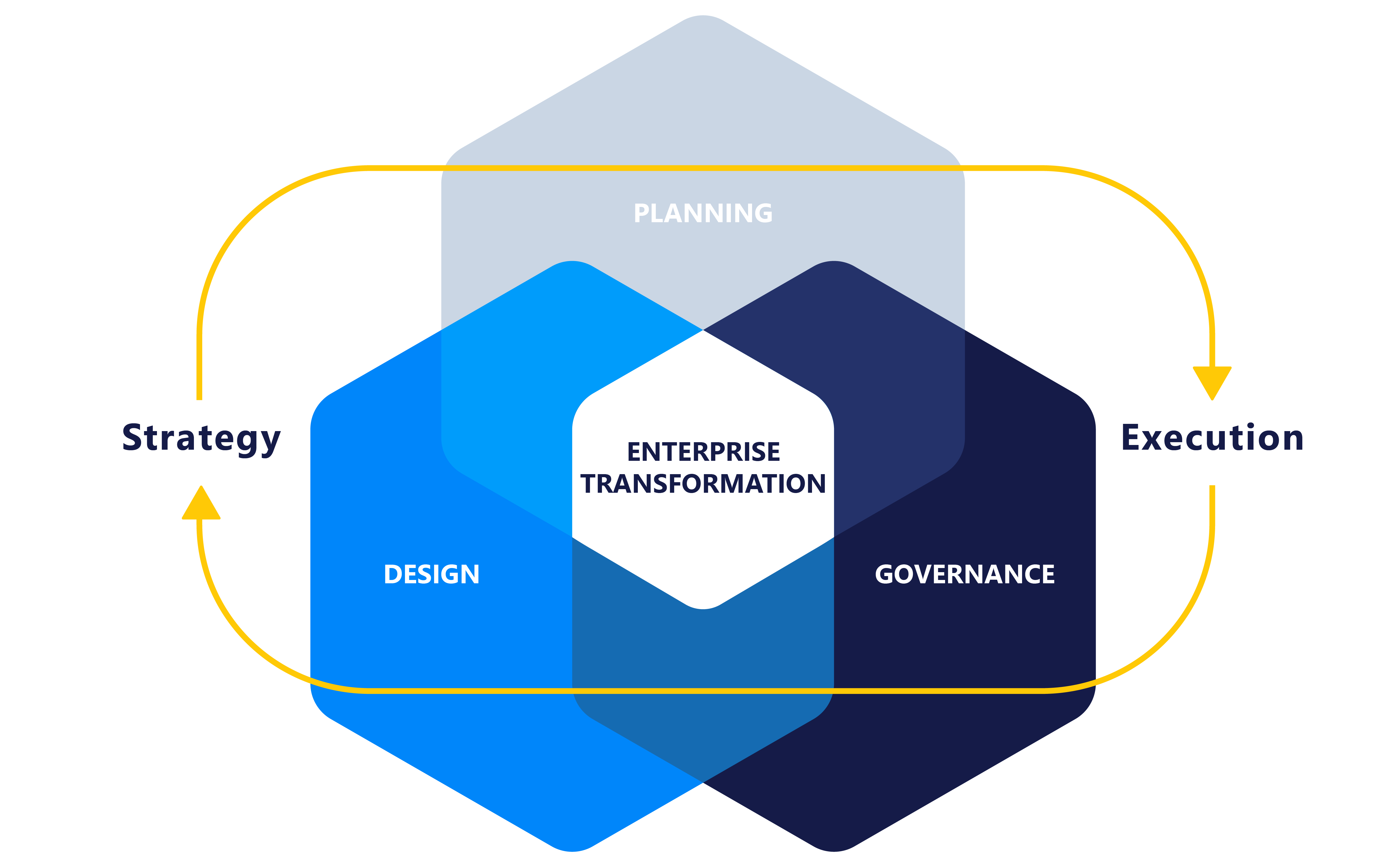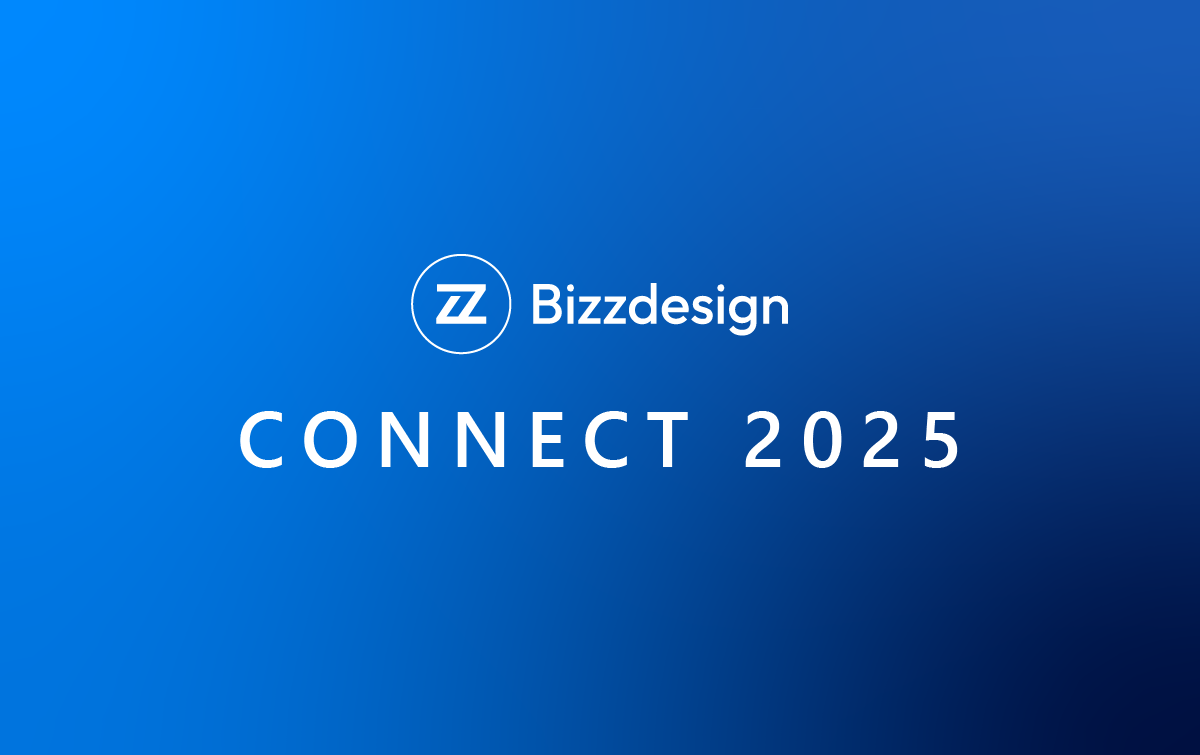Unify Your Approach to Transformation
Enterprise transformation fails when strategy, investment decisions, and execution are disconnected. Enterprise Architecture (EA) and Strategic Portfolio Management (SPM) are often managed separately, creating silos, slow decision-making, and limited visibility into business impact.
A unified approach brings these disciplines together to connect strategy to execution — enabling organizations to prioritize the right initiatives, manage risk continuously, and deliver measurable business value over time.
This guide explains why combining Enterprise Architecture and Strategic Portfolio Management is essential to drive resilient, value-led transformation at scale.
Why Enterprise Architecture and Strategic Portfolio Management Must Work Together
Of the many challenges enterprises face today, managing transformation may be the most critical. Aligning business and IT around sustainable change has always been complex. But the pace has changed, and enterprises are no longer transforming once or twice a decade. The widespread adoption of AI, tighter budgets, and growing cyber and regulatory risks mean enterprises must operate in a state of continual evolution. The challenge for IT and business leaders is to stay competitive with speed, scale, and control.
But many organizations run into roadblocks that prevent them achieving it. Teams pursue overlapping initiatives without shared visibility, creating fragmentation that slows progress. Decisions are swayed by the most persuasive voices rather than by fact-based alignment to strategic goals. Governance is reactive, leading to delays, missed risks, and disjointed execution. Without an enterprise-wide view to connect strategy with execution, transformation loses momentum and investments drift off course.
This fragmentation is one reason nearly 70% of transformations fail to deliver sustained performance improvements. But staying stuck isn’t inevitable. Enterprise architecture, as a discipline, gives leaders the transparency to see complex dependencies, assess impacts, and make coordinated changes across people, processes, and technology.
This guide offers a practical framework for shifting from disjointed initiatives to a more centralized, well-orchestrated approach for transformation. It outlines how greater visibility and governance enable better planning and decision-making, illustrated with real-world examples, and end with practical guidance on choosing the right solutions to achieve transformation that flows in your business.
Why Executing Strategy at Speed and Scale is So Difficult
KPMG reports that nearly 80% of technology professionals worry their organizations can’t keep pace with change. There are several reasons why.
Many enterprises – especially those built through mergers and acquisitions – end up with multiple systems (and data silos) that provide the same capabilities, multiple business processes and operating models to perform similar functions, differing data models for the same information, resulting in big challenges for knowing what’s going on enterprise-wide. Without shared visibility, initiatives stall, data remains locked in pockets, and IT and business teams move in different directions. Even in more coherent environments, leaders still face tough decisions on where to invest. Without a connected enterprise view, projects risk adding duplication, complexity, waste and technical debt instead of building long-term value.
The stakes rise with AI adoption. While three in four executives rank AI as a top three strategic priority, only 25% see significant returns, as published by Boston Consulting Group. AI requires clean, connected data and proactive governance – without them, investments are exposed to compliance, security, and reputational risk.
Samsung had a case that illustrates this. In 2023, reports said several employees pasted sensitive source code for semiconductor equipment into ChatGPT on three separate occasions. OpenAI’s own FAQ warns users not to share sensitive information, but ChatGPT’s usefulness likely overrode security concerns. Samsung subsequently restricted or banned employee use of generative-AI tools and warned that violating the policy could lead to termination. Security leaders have described this kind of exposure as a “conversational AI leak”: Sensitive data entered into an LLM via chat or API. Experts quoted in the same coverage noted that banning ChatGPT alone won’t solve the broader issue as more tools appear; a more workable approach is to control what data is sent to models, which connections are allowed, and who in the organization can use them.
And AI, although a top priority, is only one pressure point –– cyber threats, regulatory shifts, and budget pressure demand the same coordinated response. When organizations can’t keep up, the cost is high. In fact, a 2023 Logic Monitor survey found that 96% of large organizations experienced at least one outage in the past three years, with downtime costs often exceeding $300,000 per hour.
Figure 1: Transformation challenges by the numbers

The Case for a Unified Transformation Approach
The pressure to innovate can tempt organizations to push ahead with projects before the vision, governance, and interdependencies are clear. This is where a unified transformation approach, incorporating strategic portfolio management and enterprise architecture, delivers its greatest value: Providing a single, connected view of the enterprise, helping leaders understand impacts, identify and manage risks, align stakeholders and guide purposeful change.
For most organizations, this means bringing together complementary solutions that work in unison to plan, design, and govern transformation:

Transformation Planning
- Strategic Portfolio Management: Align IT resources with business goals and optimize IT investments for efficiency and cost effectiveness.
- Application Portfolio Management: Manage the applications that support these processes through cost rationalization, risk management, and value-driven investment decisions.
- Technology Portfolio Management: Oversee the platforms, databases, and core technologies that enable these applications with an aim toward risk reduction and standardization.
Transformation Design
- Enterprise Architecture Management: Align all applications, data, technology, processes, and people with business goals, and transformation strategy.
- Business Architecture Management:Understand how business goals and strategy map onto existing business capabilities and pinpoint gaps that need addressing.
- Solution Architecture Management: Translate business goals into actionable projects and allocate the resources and budget to drive execution.
Transformation Governance
- Business Process Management: Understand, improve, and optimize business processes to ensure transformation efforts deliver business value.
- Data Management: Capture and consolidate data, break down data silos, and provide data visibility for smart, informed decisions.
- Governance, Risk & Compliance: Identify and mitigate financial, cybersecurity, and regulatory risks to achieving operational resilience.
Each of these solutions delivers value individually. But when combined across business units and operating models, they provide the visibility, integration, and control to move from reactive, siloed change to proactive accelerated enterprise transformation. In this way, the path toward achieving strategic goals is clearer, driving alignment and impact. And transformation that flows becomes achievable.
The Payoff of a Unified Transformation Approach
You’ll know your enterprise is on the right path when transformation is based on collaborative, fact-based decision-making from a shared single source of truth. Everyone can see dependencies, anticipate impacts, and prioritize with confidence based on a common understanding. With an end-to-end enterprise transformation suite, organizations can:
- Innovate with greater confidence
Aligned enterprise architecture enables leaders to make informed choices about AI and automation. It prevents both under-investment through risk aversion and over-investment in hype-driven initiatives. The result is targeted innovation that strengthens long-term advantage.
- Prioritize and fund the right initiatives
Transformation requires selecting initiatives that deliver the greatest strategic impact with the resources available and ensuring they’re coordinated across the entire portfolio. An enterprise transformation suite makes this possible by mapping initiatives to strategic goals, highlighting capability gaps, exposing risks and dependencies, and showing where resources will have the most impact.
- Maintain continuity in times of disruption
Disruptions can come from new regulations, emerging technologies, or sudden shifts in global markets. To handle them effectively, organizations need a clear view of their systems and risks.
An enterprise transformation suite links IT assets to compliance requirements, gives visibility across thousands of applications, reduces compliance costs, and ensures monitoring stays continuously up to date.
- Accelerate change without compromising resilience
Every transformation carries IT risks, from the systems customers interact with to the backend technologies that support them. An enterprise transformation suite provides architectural standards and impact analysis to guide change safely, ensuring modernization efforts increase agility without exposing the business to unnecessary risk.
Transformation Doesn’t Have to Be So Challenging
Whether you’re in the middle of a major change or shaping a new vision, Bizzdesign can help. Our Enterprise Transformation Suite provides the capabilities to plan, design, and govern change with full visibility across your digital business. You can balance innovation with cost, embed governance from the start, and strengthen resilience against disruption.
Unify your approach to transformation and bridge the strategy-to-execution gap. Get in touch to see how we can help you achieve transformation that flows.


